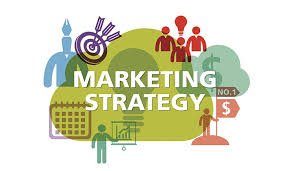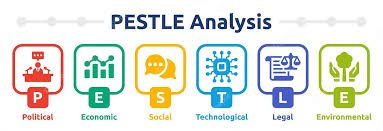Marketing in today, called a dynamic and competitive business landscape, no longer means for purely promotional purposes but is a main source of growth that is sustainable. Creating a marketing strategy without a thought-out game plan that is zig-zagging can throw you off the right track and result in a waste of resources and missed opportunities.
Companies searching for a strategic, sophisticated and yet simple in implementation approach, along with creativity, teamwork, and accountability, are to be the ivory of the marketing and management departments.
Introduction:
The Importance of Strategic Marketing Strategic marketing, which is a clearly defined and systematic process where market study, user segmentation, marketing plans, and descriptions are written by a marketer in cooperation with the top management, and the implementation and control of them are made to reach certain strategic marketing objectives. It is a concept about creation of benefits through strategic development rather than waste of money and time.
Contrary to tactical marketing, which is the main weapon for quick hospitality amenities procurement, strategic marketing is essentially a philosophy of marketing that considers the entire customer journey and the competitive environment. This is a differentiator in the increasingly crowded market and has enormous potential to drive the business sustainably.

The 7-Step Strategic Marketing
Framework: The goal of this strategic marketing framework is to be mass-customizable so that it can be applied to businesses of different sizes and industry segments. The tactics as they generally define the measurable goals of the marketing strategy can have variations according to the objectives set in the plan.
Step 1: Defining Your Mission, Vision and Values
Formulating an understanding of the fundamental traits of your organization becomes an inevitable condition before plunging into any marketing activity. In fact, the mission, vision, and values of the organization need to be predefined.
- Mission: The mission statement articulates the very essence of your organization’s reason for being – what you do, who you serve, and why you exist. The approach can be brief, unambiguous and challenging.
- Vision: The vision statement is a clear picture of where your organization wants to be in the future – its ideal state. You should be bold and full of hope.
- Values: Your values are the primary foundations that underpin your organization’s behavior and decision-making. The values define your culture and how you will relate to your stakeholders.
Mission, vision, and values clearly outlined act as the primary prism through which marketing can be conducted. With that, you will be sure that your marketing activities are not only consistent with your business goals but also whole-heartedly represent your organization’s basic identity.

Step 2: Conduct a Situation Analysis: SWOT & PESTLE
A full situation analysis might flag up the following factors internally and externally that could impinge on your marketing, based on SWOT and PESTLE analyses.
• SWOT analysis helps in the identification of a list of your organization’s internal Strengths and Weaknesses, along with external Opportunities and Threats. By understanding your strengths, you can leverage on the same. Understanding your weaknesses and how to minimize them helps reduce potential threats. Identification of opportunities helps in leveraging favorable market conditions, while identification of threats helps in preparation for challenges.

PESTLE Analysis: The framework will help you analyze the macro-environmental factors that affect your business, such as political, economic, social, technological, legal, and environmental. These kinds of factors you are able to predict changes in markets for appropriate strategy adjustment.

The situation analysis provides a clear overview of the environment within which your business will operate, in order to arrive at appropriate decisions in marketing.
Step 3: Identify Your Target Audience
It means that effective marketing requires a deep understanding of who your target audience is, what their needs and wants are, where they are spending their time, and how they make decisions about what to buy. This includes:
•Market Segmentation: Dividing your target market into smaller, more homogeneous groups based on shared characteristics such as demographics, psychographics, behavior, or geography.

• Buyer Personas Development: It means developing personas, or a fictional representation of your perfect customers, with grounds in the research and data about existing and potential customers. Personas give your personal messages and specific campaigns for segments.

Knowing your audience is key to marketing messages that reach and engage their audience, informing them on where to find more valuable channels of reach.
Step 4: Establishment of Marketing Objectives and KPIs
Clear and quantifiable marketing objectives are important for monitoring progress, while proving the return on investment of your marketing efforts. Goals need to be SMART:
• Specific: Well-defined and focused.
• Measurable: Quantifiable and thus trackable.
• Achievable: Realistic and attainable.
• Relevant: Aligns with overall business objectives.
• Time-bound: With a specific timeframe for its achievement.
KPIs are the metrics you will use to track your progress toward the attainment of your marketing objectives. Examples include website traffic, lead generation, conversion rates, and customer acquisition cost.
Setting clear objectives and KPIs ensures that your marketing activities are focused and results-oriented.

Step 5: Formulating Your Marketing Strategies and Tactics
This involves the formulation of strategies and tactics you are to use in pursuit of your marketing objectives. It includes decisions on:
•Marketing Mix (4Ps/7Ps): Product, Price, Place (Distribution), and Promotion – the traditional 4Ps. The 7Ps are used for service-based businesses, adding People, Process, and Physical Evidence.
• Marketing Channels: Diversified channels to reach your target audience include social media, email marketing, content marketing, SEO, paid advertising, and public relations.
• Messaging and Branding: Clearly establish compelling marketing messages that will resonate with your target market; build a strong brand identity differentiated from the competition.
• Content Strategy: Valuable, relevant, and consistent content would help gain and retain an audience.
A well-articulated strategy for marketing would make sure everything falls in tune for maximum result from your integrated marketing activities.
Step 6: Executing Your Marketing Plan
Implementation is where the rubber meets the road with your marketing strategies and tactics. This includes:
•Contingent on Resource Allocation of budget, personnel, and other resources to support your marketing activities.
•Timeline Development: Create a detailed timeline for executing the marketing plan.
•Project Management: Taking charge of the execution of your marketing activities with a view to their completion on time and within the prescribed budget.
Effective implementation makes the difference to translate your plan into action and tangible results.
Step 7: Control, Measurement, and Optimization
Marketing is actually an ongoing operation that requires frequent monitoring, assessing, and enhancing. This can be done with:
• Tracking KPIs: Following your KPIs on regular intervals to notice the progress or achievement of one’s marketing goals.
• Data Analysis: Analyzing different data to build trends, patterns, and an idea of places for improvement.
•Making Adjustments: Change your marketing strategies and tactics based on the data you collect.
Continuous monitoring, evaluation, and optimization ensure that your marketing efforts remain effective and relevant in an ever-changing market.
Conclusion: Creating a Strategic Marketing Culture
Strategic marketing is not something which one does as a project, but a process inculcated into the culture of your organization.
By adopting this 7-step framework, businesses are able to create a data-driven customer-centric approach towards marketing, which can ensure long-term growth of business with a leading competitive edge. It’s knowing the market, knowing your customers, and adding value continuously. Over time, a strategic way of handling marketing will be regarded as business investment rather than an expense. With this framework, your organization will finally be empowered to manage such market complexities and achieve success that is sustainable. Sources and related content
